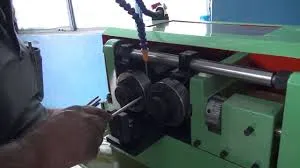
-
 Afrikaans
Afrikaans -
 Albanian
Albanian -
 Amharic
Amharic -
 Arabic
Arabic -
 Armenian
Armenian -
 Azerbaijani
Azerbaijani -
 Basque
Basque -
 Belarusian
Belarusian -
 Bengali
Bengali -
 Bosnian
Bosnian -
 Bulgarian
Bulgarian -
 Catalan
Catalan -
 Cebuano
Cebuano -
 Corsican
Corsican -
 Croatian
Croatian -
 Czech
Czech -
 Danish
Danish -
 Dutch
Dutch -
 English
English -
 Esperanto
Esperanto -
 Estonian
Estonian -
 Finnish
Finnish -
 French
French -
 Frisian
Frisian -
 Galician
Galician -
 Georgian
Georgian -
 German
German -
 Greek
Greek -
 Gujarati
Gujarati -
 Haitian Creole
Haitian Creole -
 hausa
hausa -
 hawaiian
hawaiian -
 Hebrew
Hebrew -
 Hindi
Hindi -
 Miao
Miao -
 Hungarian
Hungarian -
 Icelandic
Icelandic -
 igbo
igbo -
 Indonesian
Indonesian -
 irish
irish -
 Italian
Italian -
 Japanese
Japanese -
 Javanese
Javanese -
 Kannada
Kannada -
 kazakh
kazakh -
 Khmer
Khmer -
 Rwandese
Rwandese -
 Korean
Korean -
 Kurdish
Kurdish -
 Kyrgyz
Kyrgyz -
 Lao
Lao -
 Latin
Latin -
 Latvian
Latvian -
 Lithuanian
Lithuanian -
 Luxembourgish
Luxembourgish -
 Macedonian
Macedonian -
 Malgashi
Malgashi -
 Malay
Malay -
 Malayalam
Malayalam -
 Maltese
Maltese -
 Maori
Maori -
 Marathi
Marathi -
 Mongolian
Mongolian -
 Myanmar
Myanmar -
 Nepali
Nepali -
 Norwegian
Norwegian -
 Norwegian
Norwegian -
 Occitan
Occitan -
 Pashto
Pashto -
 Persian
Persian -
 Polish
Polish -
 Portuguese
Portuguese -
 Punjabi
Punjabi -
 Romanian
Romanian -
 Russian
Russian -
 Samoan
Samoan -
 Scottish Gaelic
Scottish Gaelic -
 Serbian
Serbian -
 Sesotho
Sesotho -
 Shona
Shona -
 Sindhi
Sindhi -
 Sinhala
Sinhala -
 Slovak
Slovak -
 Slovenian
Slovenian -
 Somali
Somali -
 Spanish
Spanish -
 Sundanese
Sundanese -
 Swahili
Swahili -
 Swedish
Swedish -
 Tagalog
Tagalog -
 Tajik
Tajik -
 Tamil
Tamil -
 Tatar
Tatar -
 Telugu
Telugu -
 Thai
Thai -
 Turkish
Turkish -
 Turkmen
Turkmen -
 Ukrainian
Ukrainian -
 Urdu
Urdu -
 Uighur
Uighur -
 Uzbek
Uzbek -
 Vietnamese
Vietnamese -
 Welsh
Welsh -
 Bantu
Bantu -
 Yiddish
Yiddish -
 Yoruba
Yoruba -
 Zulu
Zulu
Price List for Steel Thread Rolling Machines and Equipment
Understanding the Pricing of Steel Thread Rolling Machines
In the manufacturing industry, efficiency and precision are critical. One piece of equipment that plays a vital role in producing high-quality threaded metal products is the steel thread rolling machine. These machines are utilized extensively for rolling threads on various steel components, making them essential for numerous applications including construction, automotive, and aerospace industries. As the demand for precision-engineered products continues to rise, understanding the price dynamics of steel thread rolling machines becomes increasingly important for manufacturers and investors alike.
What is a Steel Thread Rolling Machine?
A steel thread rolling machine is a specialized industrial machine that creates threaded surfaces on metal workpieces by deforming the material instead of cutting it. Through a process called cold forming, these machines employ high pressure to roll the steel workpiece between two or more dies, thus shaping it into the desired threaded form. Unlike traditional cutting methods, thread rolling offers benefits such as increased strength of the threads, better surface finish, and less material waste.
Factors Influencing Prices
When it comes to the pricing of steel thread rolling machines, several factors come into play
1. Machine Specifications The size, capacity, and features of the machine significantly influence its price. Larger machines that can accommodate heavier workpieces or higher production rates typically come with a higher price tag.
2. Technology and Automation Modern thread rolling machines might come with advanced technology, such as CNC (Computer Numerical Control) capabilities, which enhance precision and reduce labor costs over time. Machines that incorporate automated features or intelligent controls tend to be more expensive due to their sophisticated design.
3. Brand and Manufacturer Reputation Established brands with a proven track record of reliability and performance generally command higher prices. These brands often offer better after-sales support, ensuring that their machines are maintained and serviced properly.
steel thread rolling machine pricelist

4. Materials and Durability The quality of the materials used in the construction of the machine is crucial for its longevity and effectiveness. Higher quality metal components can lead to a higher initial investment, but they often result in lower operational costs and better performance over time.
5. Market Demand The demand for threaded components across various industries can also affect pricing. In times of high demand—such as during a construction boom—prices for machinery may rise as manufacturers seek to expand their capabilities.
Typical Price Ranges
Prices for steel thread rolling machines can vary widely based on the aforementioned factors. Generally, entry-level machines may start from around $10,000, ideal for small manufacturers or workshops. Mid-range machines designed for more extensive operations could fall in the $20,000 to $50,000 bracket, offering additional features and higher capacity.
For high-end machines equipped with advanced automation and robust capabilities, prices can exceed $100,000. These machines cater to large-scale manufacturers focused on high-volume production with stringent quality requirements.
Conclusion
Investing in a steel thread rolling machine is a significant decision that requires careful consideration of various factors, including machine specifications, technology, brand reputation, and market conditions. Each of these factors contributes to the overall pricing of the machines, influencing the return on investment for manufacturers.
Understanding the price landscape allows businesses to make informed decisions that align with their production needs and budget constraints. As technology continues to evolve, companies should stay updated on trends in the machinery market to ensure that they are making optimal investments that enhance their operational efficiency and product quality. With the right machine in place, manufacturers can improve their productivity, reduce waste, and ultimately boost their competitive edge in the market.
